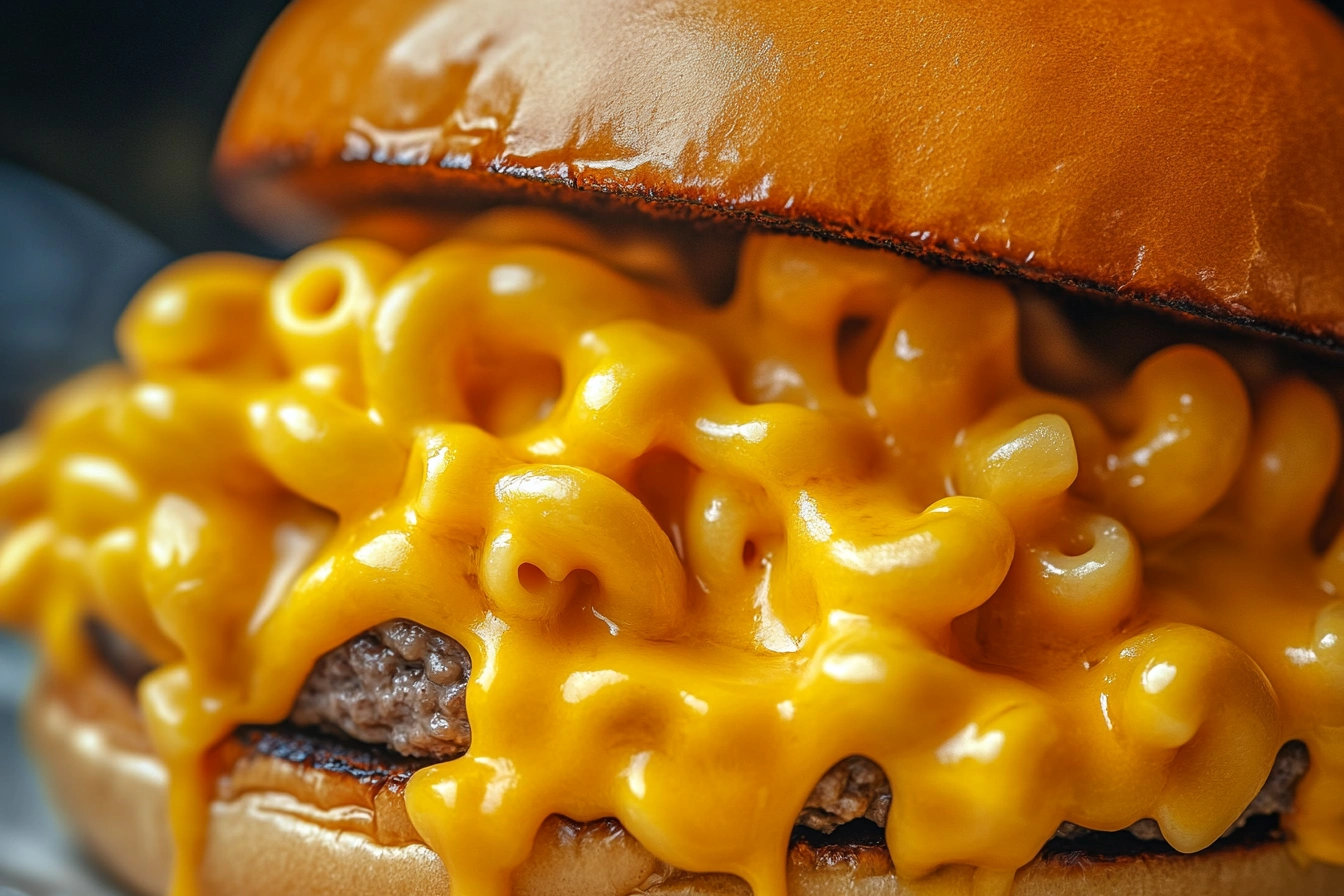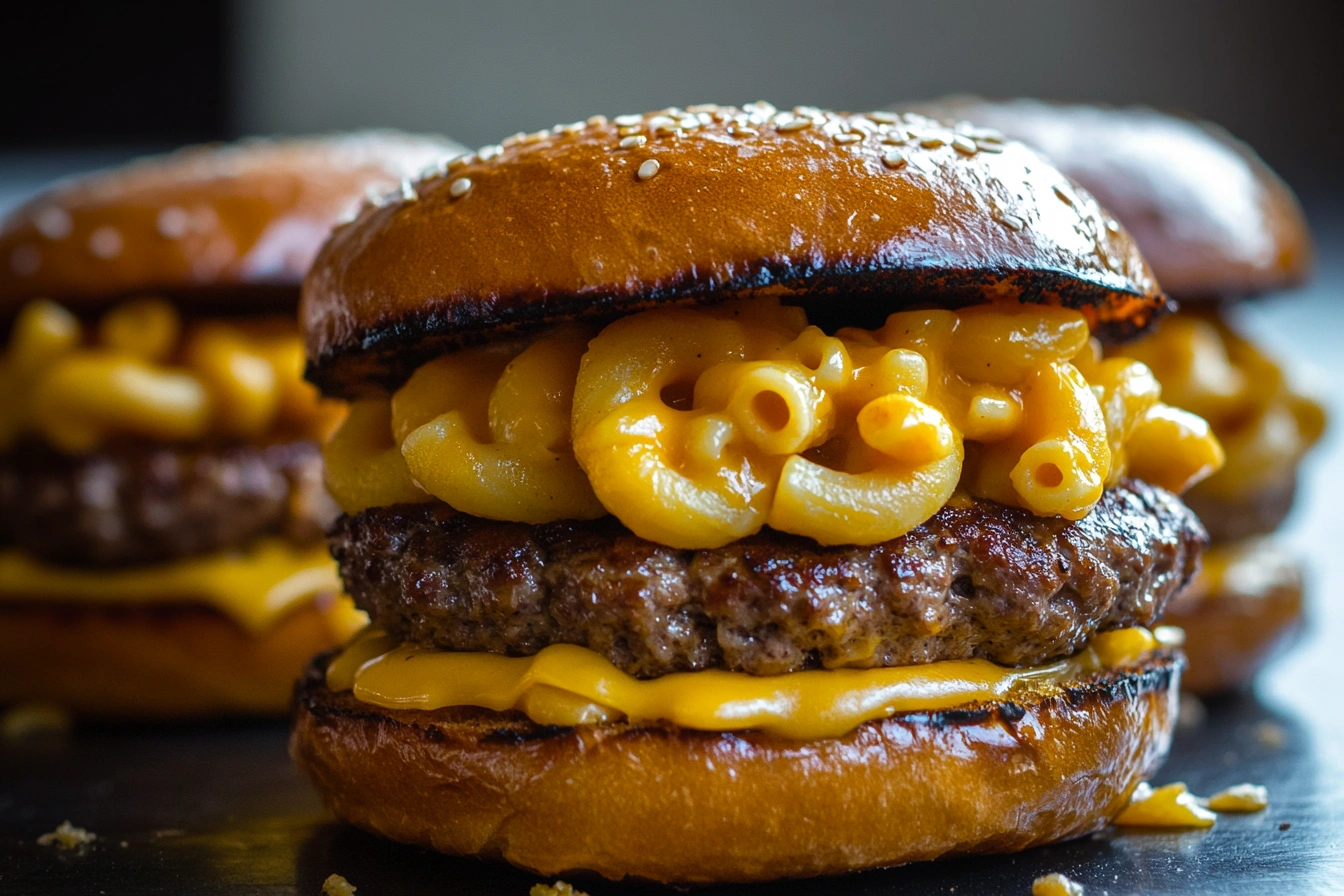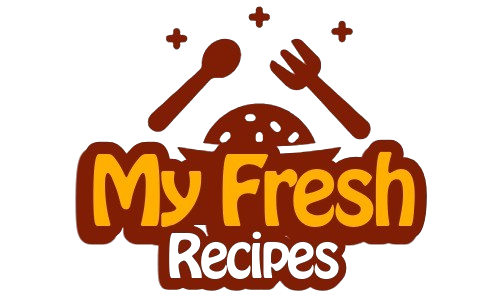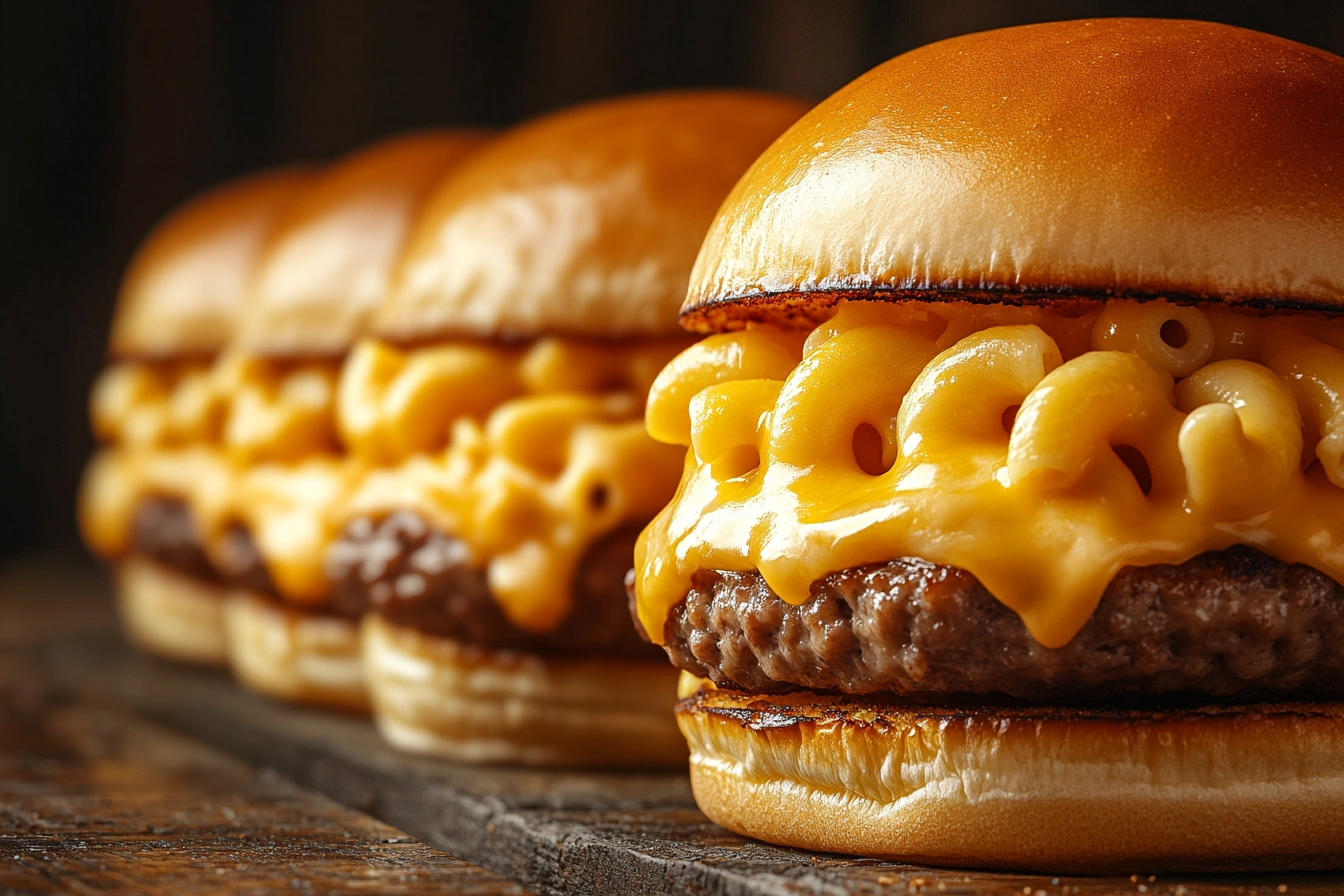Understanding the Best Cheese Trio for Mac and Cheese
1. Introduction
What 3 Cheeses Are Best for Mac and Cheese? Mac and cheese is one of the most beloved comfort foods, and the secret to making it truly exceptional lies in choosing the right combination of cheeses. While using just one type of cheese can create a decent dish, combining three different cheeses results in better flavor complexity, improved meltability, and a richer texture.
A great mac and cheese needs a balance of flavors and textures:
- A sharp, tangy cheese for depth of flavor.
- A creamy, mild cheese to ensure smooth meltability.
- A stretchy, gooey cheese to give it that signature cheesy pull.
Choosing the right cheeses ensures that your mac and cheese is not only deliciously cheesy but also smooth, creamy, and satisfying. A well-balanced trio provides the perfect blend of taste, texture, and meltability, elevating this classic dish from good to gourmet.
In this guide, we’ll explore why three cheeses work better than one, the science behind cheese melting, and the top three cheeses that make the best mac and cheese. Whether you prefer classic flavors or a more upscale twist, this combination will guarantee the ultimate mac &cheese experience.
Table of Contents
2. The Science Behind the Perfect Cheese Blend
Creating the perfect mac &cheese is more than just throwing any cheese into a sauce—it’s about understanding how different cheeses melt, interact, and complement each other. Here’s why using a blend of three cheeses works best:
Balancing Meltability, Texture, and Flavor
Different cheeses bring different qualities to mac and cheese:
- Cheddar provides bold, sharp flavor but doesn’t always melt as smoothly on its own.
- Gruyère adds a nutty richness and silky texture, enhancing the overall creaminess.
- Monterey Jack melts effortlessly, preventing the sauce from becoming grainy or clumpy.
By combining these three, you get the perfect balance of taste and texture without compromising on meltability.
Fat Content & Moisture Levels – How They Affect Creaminess
Cheese composition plays a big role in how it behaves when melted.
- High-moisture cheeses (like Monterey Jack and mozzarella) melt smoothly and create a stretchy, gooey texture.
- Low-moisture, high-fat cheeses (like sharp cheddar and Gruyère) bring richness and intense flavor but need a softer cheese to help them integrate well into the sauce.
Choosing a Combination of Mild, Sharp, and Melty Cheeses for the Best Result
To create a perfectly creamy, flavorful mac and cheese, use a trio that includes:
- A sharp cheese for strong flavor (e.g., cheddar).
- A melting cheese for gooeyness (e.g., Monterey Jack).
- A rich, nutty cheese for depth (e.g., Gruyère).
This mix ensures that your mac and cheese has a bold taste, a creamy texture, and a perfectly smooth finish.
3. The Top 3 Cheeses for Mac &Cheese
Now that we understand the science behind cheese melting, let’s dive into the three best cheeses for mac and cheese and why they work so well together.
1. Cheddar – The Classic Choice
Why It’s Great:
- Cheddar is the foundation of traditional mac and cheese, known for its sharp, tangy flavor.
- It has good meltability but can sometimes become a bit grainy when overheated, which is why it benefits from being paired with other cheeses.
Differences Between Mild, Sharp, and Extra Sharp Cheddar:
- Mild Cheddar – Creamy but with a weaker flavor.
- Sharp Cheddar – Bolder taste, melts well but needs help to stay smooth.
- Extra Sharp Cheddar – Most intense flavor but less smooth melting.
For mac and cheese, sharp cheddar is the best choice—it provides just the right amount of flavor without overpowering the dish.
White Cheddar vs. Yellow Cheddar:
- White Cheddar – Slightly tangier and more natural (since it lacks annatto, the coloring agent in yellow cheddar).
- Yellow Cheddar – Creamier in texture but has the same essential flavor.
Both work equally well, so it comes down to personal preference.
2. Gruyère – The Gourmet Addition
Why It’s Great:
- Gruyère is a Swiss cheese with a nutty, slightly sweet flavor that adds depth and complexity to mac and cheese.
- It melts into a silky texture, making the cheese sauce extra smooth.
- Unlike some other aged cheeses, Gruyère doesn’t get stringy when melted, making it perfect for a creamy sauce.
How It Pairs with Other Cheeses:
- Gruyère balances the sharpness of cheddar with its mild, nutty profile.
- It enhances the creaminess of Monterey Jack, making the sauce ultra-smooth.
Gruyère is often used in gourmet mac and cheese recipes and adds a restaurant-quality flavor to homemade dishes.
3. Monterey Jack – The Ultimate Melter
Why It’s Great:
- Monterey Jack is super creamy, mild, and melts beautifully.
- It helps balance out sharper cheeses like cheddar by preventing the sauce from becoming too intense.
- This cheese gives mac and cheese its signature gooey, stretchy texture.
Why It’s a Better Choice Than Mozzarella:
- While mozzarella melts well, it can become too stringy for mac and cheese.
- Monterey Jack provides the same smooth melt but with a creamier consistency.
How It Complements Cheddar & Gruyère:
- Cheddar provides the bold, tangy flavor.
- Gruyère adds richness and depth.
- Monterey Jack ensures smooth meltability, creating the ultimate cheese trio for mac and cheese.

Cooking Techniques & Variations for Mac and Cheese
4. Alternative Cheese Combinations & Substitutes
While cheddar, Gruyère, and Monterey Jack make an excellent trio for mac &cheese, there are many other cheeses that can create delicious variations. Whether you’re looking for a smoky twist, extra umami, or an ultra-creamy texture, here are some great alternatives:
Other Great Cheeses for Mac &Cheese
1. Smoked Gouda – Adds a Smoky Depth
- Smoked gouda has a buttery, smoky flavor that enhances the richness of mac and cheese.
- It melts well, creating a smooth and velvety sauce.
- Works well in BBQ-style mac and cheese or with bacon and caramelized onions.
2. Parmesan – Sharp and Salty for Extra Umami
- Parmesan is a hard cheese with a strong, nutty, and salty flavor.
- It doesn’t melt as well as other cheeses but adds a depth of umami when blended into the sauce.
- Best used in combination with melty cheeses like Monterey Jack or mozzarella.
3. Brie – Ultra Creamy and Buttery
- Brie is known for its rich, buttery texture, making mac and cheese extra luscious.
- It has a mild, slightly earthy flavor that pairs well with stronger cheeses.
- Works best when the rind is removed, allowing the cheese to melt smoothly into the sauce.
How to Adjust the Cheese Blend Based on Taste Preference
- For a sharper, tangier mac and cheese: Use extra sharp cheddar, Parmesan, and Gruyère.
- For a smoky, BBQ-style mac and cheese: Use smoked gouda, cheddar, and Monterey Jack.
- For an ultra-creamy, mild version: Use Brie, mozzarella, and Havarti.
- For a spicy kick: Add pepper jack or a hint of blue cheese to the mix.
By mixing and matching cheeses, you can create a customized mac and cheese that fits your preferred flavor profile!
5. How to Make the Perfect 3-Cheese Mac &Cheese
Creating the perfect mac and cheese requires more than just good cheese selection—it’s about using the right cooking techniques to ensure a smooth, creamy, and flavorful dish. Here’s how to make both stovetop and baked mac and cheese using the cheddar, Gruyère, and Monterey Jack trio.
Step-by-Step Guide: Stovetop vs. Baked Mac &Cheese
Stovetop Mac and Cheese (Creamy & Quick)
Ingredients:
- 2 cups elbow macaroni (or pasta of choice)
- 2 tablespoons butter
- 2 tablespoons all-purpose flour
- 2 cups whole milk
- 1 cup heavy cream
- 1 cup sharp cheddar cheese (shredded)
- ¾ cup Gruyère cheese (shredded)
- ¾ cup Monterey Jack cheese (shredded)
- 1 teaspoon Dijon mustard
- Salt and black pepper to taste
Instructions:
- Cook the pasta: Boil macaroni according to package instructions. Drain and set aside.
- Make the cheese sauce: In a saucepan over medium heat, melt butter, then whisk in flour to create a roux. Cook for about 1 minute until slightly golden.
- Add milk and cream: Slowly pour in the milk and cream, whisking continuously to prevent lumps.
- Melt the cheese: Reduce heat to low and gradually add the cheeses, stirring until fully melted.
- Season the sauce: Add Dijon mustard, salt, and black pepper to enhance flavor.
- Combine with pasta: Stir in the cooked pasta until fully coated in the sauce.
- Serve immediately for the creamiest stovetop mac and cheese.
Baked Mac and Cheese (Golden & Crispy)
Additional Ingredients:
- ½ cup panko breadcrumbs
- 2 tablespoons melted butter
- ¼ cup grated Parmesan cheese
Instructions:
- Follow steps 1-6 from the stovetop version, then pour the mac and cheese into a buttered baking dish.
- Make the topping: Mix panko breadcrumbs with melted butter and Parmesan cheese.
- Sprinkle topping evenly over mac and cheese.
- Bake at 375°F (190°C) for 20 minutes until golden and crispy.
- Let it cool for 5 minutes before serving to allow the flavors to settle.
Best Techniques for Melting Cheese Without Graininess
One of the most common mistakes when making mac and cheese is grainy or clumpy cheese sauce. Here’s how to avoid it:
✔ Grate cheese fresh – Pre-shredded cheese contains anti-caking agents that affect melting.
✔ Use low heat – High heat can cause cheese proteins to break down, resulting in a gritty texture.
✔ Melt cheese gradually – Add cheese in small handfuls and stir constantly.
✔ Use a roux (butter + flour mixture) – This helps the cheese sauce stay smooth and emulsified.
Tips for Achieving a Smooth, Creamy Sauce Every Time
- Use whole milk or heavy cream instead of skim milk for better texture.
- Add a splash of pasta water if the sauce gets too thick—it helps loosen it up.
- A dash of mustard or hot sauce enhances cheese flavor without overpowering it.
- Stir continuously to prevent cheese from separating.

6. Frequently Asked Questions (FAQs)
1. What Are the Best 3 Cheeses for Mac and Cheese?
The top three cheeses for mac and cheese are:
✔ Cheddar – Sharp and tangy, provides a strong cheese flavor.
✔ Gruyère – Nutty and creamy, enhances meltability.
✔ Monterey Jack – Smooth and mild, ensures a gooey, stretchy texture.
This combination delivers the perfect balance of flavor, meltability, and creaminess.
2. Can I Use Pre-Shredded Cheese for Mac and Cheese?
- It’s not recommended because pre-shredded cheese contains anti-caking agents that prevent smooth melting.
- Freshly shredded cheese melts better and results in a creamier sauce.
3. What Cheese Should I Avoid in Mac and Cheese?
Some cheeses don’t melt well and can result in a grainy or rubbery texture. Avoid:
❌ Feta – Too crumbly and doesn’t melt smoothly.
❌ Halloumi – Holds its shape and won’t blend into the sauce.
❌ Goat Cheese – Strong flavor, doesn’t create a creamy texture.
4. How Do I Make Mac and Cheese Creamier?
✔ Use whole milk and heavy cream for a richer base.
✔ Add a small amount of cream cheese or Velveeta to smooth out the sauce.
✔ Avoid overcooking the pasta, as it will continue absorbing liquid after mixing.
5. Can I Make Mac and Cheese Without Cheddar?
Yes! If you want to skip cheddar, try this alternative blend:
- Gouda – Smooth and creamy with a mild, nutty flavor.
- Brie – Buttery and ultra-creamy.
- Mozzarella – Melts beautifully for a stretchy, gooey texture.
This creates a milder but super creamy version of mac and cheese!
Final Thoughts on the Perfect Mac and Cheese
By choosing the right cheese trio and cooking techniques, you can create the ultimate mac and cheese—whether you prefer it stovetop creamy or baked crispy.
✔ Best 3 Cheeses: Cheddar, Gruyère, Monterey Jack.
✔ Perfect Cooking Method: Stovetop for creamy, baked for crispy top.
✔ Customization: Experiment with gouda, parmesan, or brie for unique flavors.
Now, grab your favorite cheeses and start making the best mac and cheese ever! 🧀🔥🍽️

